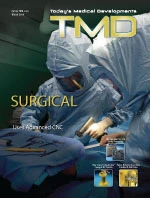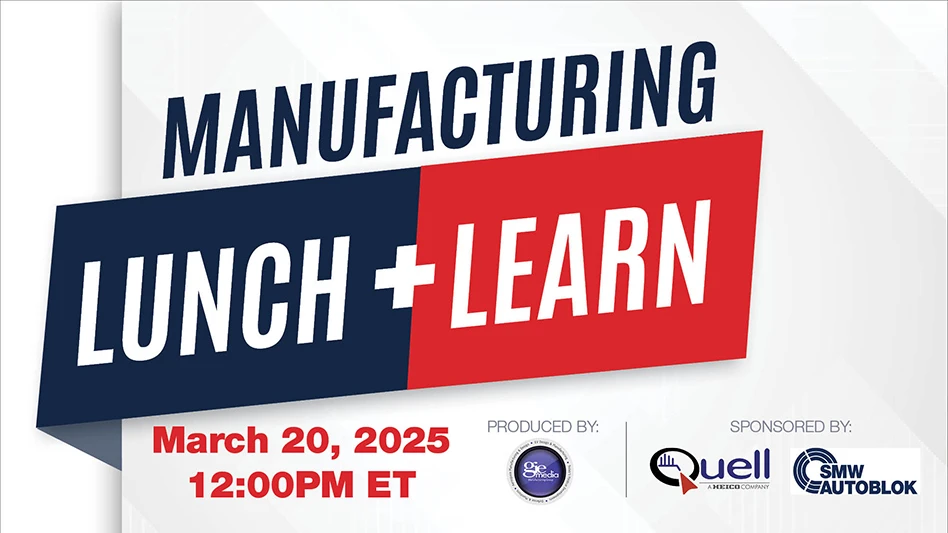 System 6 power tools from Stryker are used throughout the world surgical market. Stryker Corp. is a global leader in medical devices and equipment, ranging from orthopaedic implants to all types of surgical apparatus and patient care devices. Its products are found in medical care facilities around the world.
System 6 power tools from Stryker are used throughout the world surgical market. Stryker Corp. is a global leader in medical devices and equipment, ranging from orthopaedic implants to all types of surgical apparatus and patient care devices. Its products are found in medical care facilities around the world.
The Stryker Instruments Division operates five facilities, located in Michigan, Texas, Puerto Rico, Germany, and Ireland. This division produces surgical tools, including cast cutters, inflow/outflow cannulae, burrs, drills, saws, and microdebriders. Its customers are surgeons and operating room equipment specifiers, as well as otolaryngologists (ENT), emergency medical vehicle outfitters, and others. Stryker’s products are used primarily for orthopaedic, spine, neurological, and ENT procedures, plus minimally invasive interventional pain procedures.
On its System 6 power tools, which include high-precision handheld devices such as oscillating bone saws, Stryker has frequent manufacturing requirements for low quantities of these highly specialized devices. This scenario presents an ongoing challenge for the Production Group’s management team at the company’s main manufacturing location in Kalamazoo, MI. This location is also home to the company’s Experimental Group, which investigates new technologies, advanced materials, and various manufacturing protocols, in an effort to maintain optimal productivity for the company. Production Part Approval Process (PPAP) protocols are also strategized here.
In its tool production, the company uses a variety of substrates, including 300 and 400 series stainless steels, 6061 aluminum and titanium, plus specialty materials such as Inconel, Nitinol, ALG alloys, and others. Assorted thermoplastics such as Delrin, ABS, and Teflon, plus thermoplastic elastomers, are also machined. Production processes at Stryker are strictly monitored for compliance to FDA standards.
The Experimental Group provides components to Stryker R&D engineers for testing and evaluation, including prototyping surgical tools for field evaluation and aesthetic feedback by surgeons, though not for formal trials or surgical use.
As a result, Stryker maintains a variety of machine tools and other metalworking equipment at its Kalamazoo facility. Basic milling and drilling equipment is here, alongside 3- and 5-axis CNC machining centers and EDMs.
Among the newest advanced CNC machines in the Experimental Group is a DMG Model DMC 635 V eco, a 3-axis vertical milling center with an 8,000rpm spindle and a 20-position tool changer, all run by the Siemens Sinumerik 810D CNC and ShopMill software onboard. Rich Mitchell, supervisor of the Experimental Group, explains, “We typically store a few programs on the CNC and keep our backlog of programs on a network drive for easy recall. Our group supports about 60 engineers, so the communication between departments is constant and quite fluid. We take IGES or PRT 3D files and can program directly from the digital content, using Mastercam and now the Siemens ShopMill program that is right on the machine. The Sinumerik 810D control receives excellent ratings from our operators and has fast become their control of choice, especially on this very fast and flexible 3-axis ECO milling machine from DMG.”
Mitchell details how the part and tool set-up pages are quite intuitive and incorporate graphic depictions for specific data inputs, thereby reducing the learning curve for the operators. “Most of our guys had never used a Siemens control previously, so it is ironic that this CNC is now their favorite. They literally line up to use it.”
Mitchell further notes that program transfer from the Stryker network back to the CNC is fast and simple. This is very advantageous in the Experimental Group, where most jobs are one-offs or very small quantities. Operators can write and run multiple programs through each CNC daily, saving time on entering and editing set-up data onto the machine.
The very nature of this department, as it conducts various experimental trials to seek out the best production methods and machining strategies, mandates extremely fast turnarounds, and Mitchell credits the Siemens CNC for facilitating this process. “We currently have four other controls in our milling department, so it is easy to imagine the challenges our guys face daily. The Siemens numerical control has worked quite well for us with a manual touch probe and manual Z-axis presetter for tooling. As we expand or replace current milling technology in our production, we will most likely transition to a Siemens 840D with a Renishaw touch probe and tool presetter to expedite set-ups.”
The seven operators in the Experimental Group were all given training on the programming of the CNC by DMG, the machine tool builder, represented by Nate Buck, the sales engineer, operating from the builder’s North American headquarters in Itasca, IL.
This machine joins multiple DMG TWIN 65 and TWIN 42 machining centers, each with an upper B-axis to complement the Y-axis and driven tools used to create the contours and sophisticated geometries required. These turning machines have the Siemens Sinumerik 840D, which enables precise and transferable control of spindle and axis movement variations via compile cycles, so Stryker Experimental engineers can make more rapid changes in their production scheduling.
Randy Carpenter, senior project engineer for Stryker Instrument’s Production Group explains: “We run families of parts, most often. We have one set of parts, run in 416 and 17-4 with 38 Rockwell hardness. We are typically running dimensional tolerances down to the ten-thousandths, so it is very precise work. Compared to the older machines and controls, we have tracked our cycle times in relation to our target Cpk’s and we are getting better than 20% reductions, as a result of the DMG machines with Siemens CNC on board. Plus, we already see the improvements in surface finish, owing to the smoother translations line to line in the milling and turning programs.”
Carpenter also notes his production department has been able to achieve considerably higher changeover efficiencies that allow more jobs to run per shift. “System 6 has become a big seller for Stryker and our ability to ramp up production on the DMG machines with Siemens numerical controls has been a big plus.”
Siemens Industry Inc.
Drives Technologies-Motion Control
Elk Grove Village, IL
usa.siemens.com/cnc
DMG America
Itasca, IL
dmgamerica.com

Explore the March 2010 Issue
Check out more from this issue and find your next story to read.
Latest from Today's Medical Developments
- Kistler offers service for piezoelectric force sensors and measuring chains
- Creaform’s Pro version of Scan-to-CAD Application Module
- Humanoid robots to become the next US-China battleground
- Air Turbine Technology’s Air Turbine Spindles 601 Series
- Copper nanoparticles could reduce infection risk of implanted medical device
- Renishaw's TEMPUS technology, RenAM 500 metal AM system
- #52 - Manufacturing Matters - Fall 2024 Aerospace Industry Outlook with Richard Aboulafia
- Tariffs threaten small business growth, increase costs across industries





